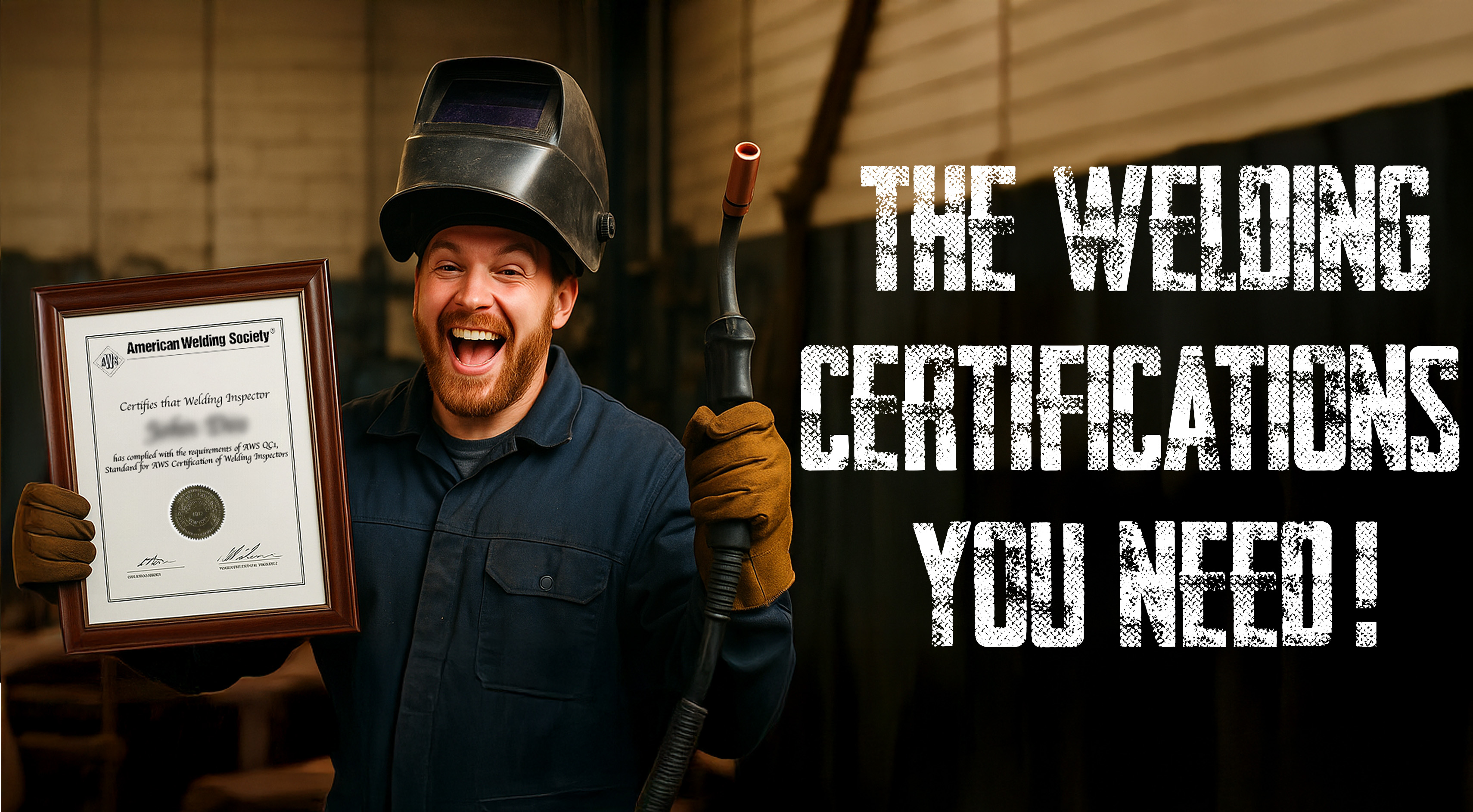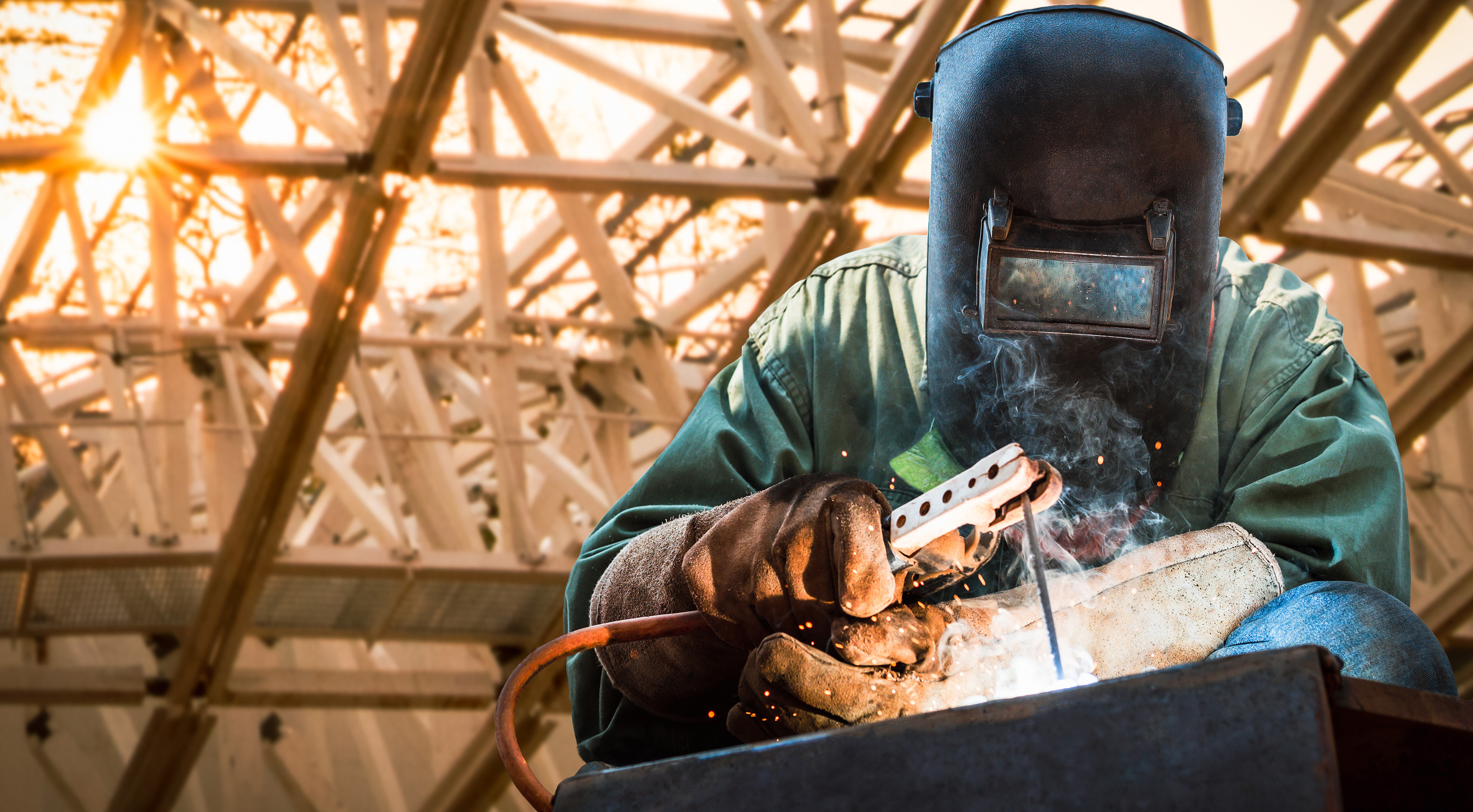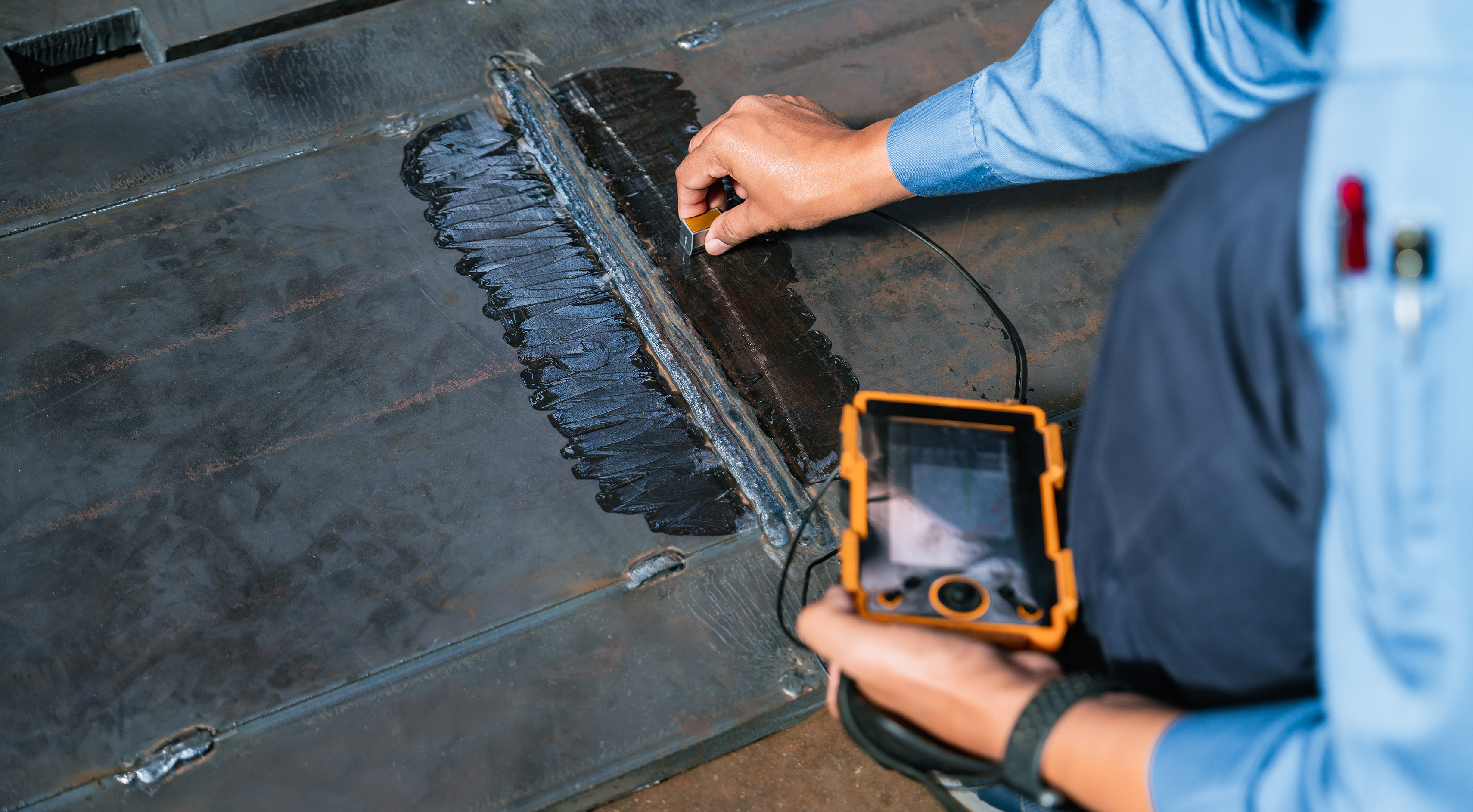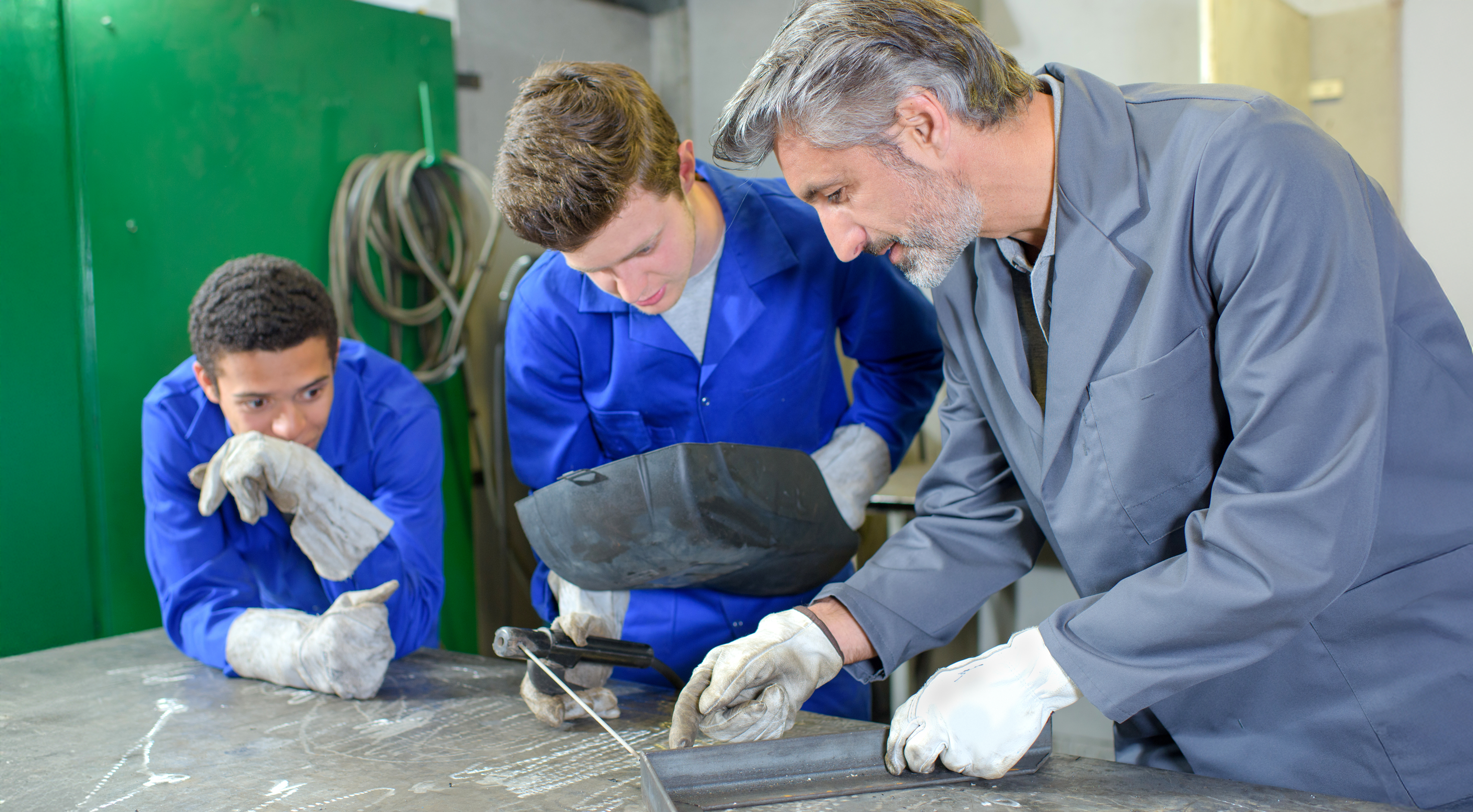The Top Certifications for Welders and Metal Fabricators

In welding and metal fabrication, every joint, weld bead, and finished assembly must do more than just hold—it must be done safely, consistently, and some done in compliance with strict industry standards. Organizations like the American Welding Society (AWS) and the American Society of Mechanical Engineers (ASME) set rigorous codes that dictate how welds should be made, inspected, and tested. Meeting these standards isn’t optional when the work involves structures, pressure systems, or critical components—it’s essential.
From reducing the risk of defects that could lead to catastrophic failure, to streamlining workflows with consistent, repeatable processes, certifications elevate both the individual and the shop. For employers, welding certifications for personnel mean fewer errors, less rework, and more reliable products. For welders and fabricators, it’s proof that their craftsmanship meets—or exceeds—the highest benchmarks in the industry.
In this blog, we’ll explore the top welding certifications that reinforce safety, quality, and efficiency, and why they are vital for anyone committed to producing welds that meet the toughest standards.
Welding Certifications
Qualified vs. Certified Welders (CW) : What’s the Difference?

Qualified Welder:
A qualified welder is someone who has demonstrated their ability to produce a sound weld following the rules of a Welding Procedure Specification (WPS). This involves performing a test weld—often on a sample coupon—which is then evaluated through visual checks, destructive or non-destructive testing, and documented via a Welder Qualification Test Record (WQTR)
This shows that the welder can perform welds up to a specified standard, but it is primarily a performance measure—it doesn't necessarily involve formal documentation yet. Often done internally by a company or project-specific inspector. Not necessarily recognized outside that company. Think of it like: “You can do this weld the way we need it, here and now.”
Certified Welder (CW):
A welder is certified when that qualification is documented by an independent authority, such as the American Welding Society (AWS), American Society of Mechanical Engineers (ASME), or another standards body. Certification is formal, portable, and recognized across the industry.
- Formal Examination: A certified welder has gone through a rigorous process that includes a practical, hands-on test and sometimes a written exam. They must create a test weld coupon that is then inspected and tested (both destructively and non-destructively) to ensure it meets the requirements of a particular welding code or standard.
- Proof of Skill: The certification serves as official written proof of a welder's competence in a specific welding process material, thickness, and welding position. It's not just a claim of skill; it's a verifiable, documented record.
- Distinction from a "Qualified Welder": While the terms are sometimes used interchangeably, there's a technical difference. A "qualified welder" has passed a test to perform a specific job for a specific employer. This qualification is often not transferable to another company. A "certified welder," on the other hand, holds a certification from a third party that is recognized and accepted by many employers, making their skills highly valuable and in demand.
A welder's certification is an essential document for working on critical projects like pipelines, bridges, pressure vessels, and structural steel, where the integrity of every weld is crucial for safety and performance.

AWS Certified Welding Inspector (CWI):
A CWI is a highly respected professional in the welding industry who serves as the "guardian of quality" for welded components and structures. The certification is a globally recognized credential issued by the American Welding Society (AWS) and signifies that an individual has demonstrated a comprehensive understanding of welding processes, metallurgy, codes, and inspection techniques. Certified Welding Inspector is responsible for making sure every weld meets the strict requirements of codes like AWS D1.1, ASME, and American Petroleum Institute (API). Certified Welding Inspector inspects more than just the finished bead; they oversee the entire welding process from preparation to final inspection.
Key responsibilities include:
- Reviewing welding procedure specifications for compliance
- Checking joint preparation, fit-up, and materials before welding starts
- Monitoring welding in progress to ensure proper technique and parameters
- Performing visual and non-destructive testing to detect defects
- Documenting inspection results for traceability and code compliance
By catching issues before they become costly failures, CWIs safeguard both safety and quality, ensuring that every weld is strong, reliable, and built to standard.
AWS Certified Welding Supervisor (CWS):
The AWS Certified Welding Supervisor (CWS) certification is specifically designed for those who oversee welding operations. It signifies a comprehensive understanding of welding processes, safety management, productivity strategies, and quality control standards.
For the Individual:
- Enhanced Professional Development: Deepens your technical and managerial expertise, helping you to confidently manage welding projects and teams.
- Recognition as a Welding Leader: Positions you as a knowledgeable authority in welding operations, adding credibility and respect in your role.
- Expanded Responsibility: Prepares you to oversee welding operations, ensuring they meet the highest quality and safety standards.
For the Company:
- Improved Safety and Risk Management: Supervisors with the CWS certification actively reinforce safety protocols, helping reduce workplace accidents and liability risks.
- Consistent Quality and Productivity: Certified supervisors ensure welders follow best practices, improving productivity, reducing defects, and minimizing rework.
- Cost Efficiency and Savings: Better oversight and management of welding operations reduce material waste, downtime, and operational expenses, ultimately benefiting the company's bottom line.

How Welding Trade School Programs Help Achieve Certifications:
Welding trade school programs are often the first step toward earning industry-recognized certifications from organizations like the American Welding Society (AWS) and the American Society of Mechanical Engineers (ASME). These programs combine classroom instruction with hands-on practice, creating a structured path that builds both technical skill and theoretical knowledge.
Key ways welding trade schools prepare students for certification:
- Code-Based Training: Students learn welding techniques and safety practices aligned with AWS, ASME, or API standards, so they’re already working to the specifications required in certification tests.
- Hands-On Practice: Training labs simulate real fabrication shop environments, giving students the chance to master processes like MIG, TIG, Stick, and Flux-Cored welding in multiple positions.
- Welding Procedure Familiarity: Instructors teach students how to read and follow Welding Procedure Specifications (WPS), a critical skill for passing performance qualification tests.
- Safety Readiness: Programs include OSHA 10 or OSHA 30 training, ensuring graduates understand how to maintain safe, compliant workspaces.
- Mock Certification Testing: Many schools conduct practice tests that mirror official certification exams, helping students build confidence and reduce test-day errors.
By the time students complete a welding trade school program, they’ve not only built practical skills—they’ve also gained the procedural discipline, safety awareness, and code knowledge needed to earn and maintain professional welding certifications.
Where Koike Equipment Fits In:
Koike’s welding positioners, manipulators, and fixed automation systems are tools that a welder can leverage to enhance quality and efficiency:
- Welding Positioners hold and rotate workpieces, giving welders better access and allowing for more ergonomic, consistent welds. This reduces fatigue and helps maintain uniform bead quality.
- Column & Boom Manipulators position the welding torch with precision, ensuring repeatable weld paths and improving consistency on large or complex components.
- Fixed Automation Systems standardize repetitive welding tasks, reducing variation between welds and freeing skilled welders to focus on critical areas.
Koike’s cutting, welding, and positioning equipment is built for precision, consistency, and safety—the same qualities welding certifications demand. Certified welders bring the skill; Koike provides the tools that make it repeatable and efficient. Together, they ensure every weld meets strict standards, reduces rework, and delivers superior results. Koike and certification—SIMPLY BETTER BUILT for each other.
